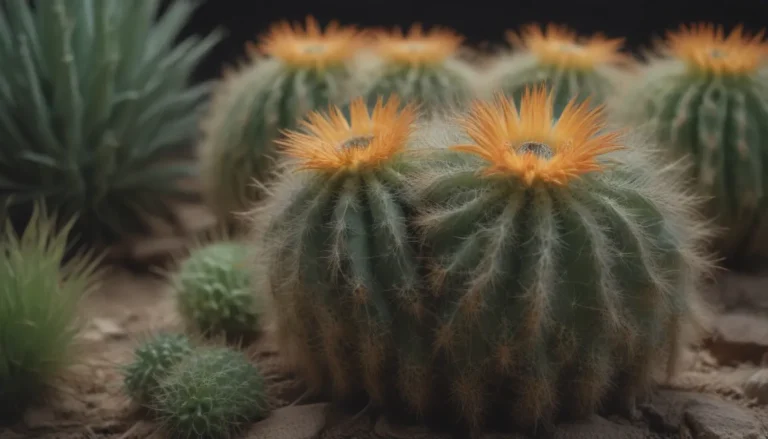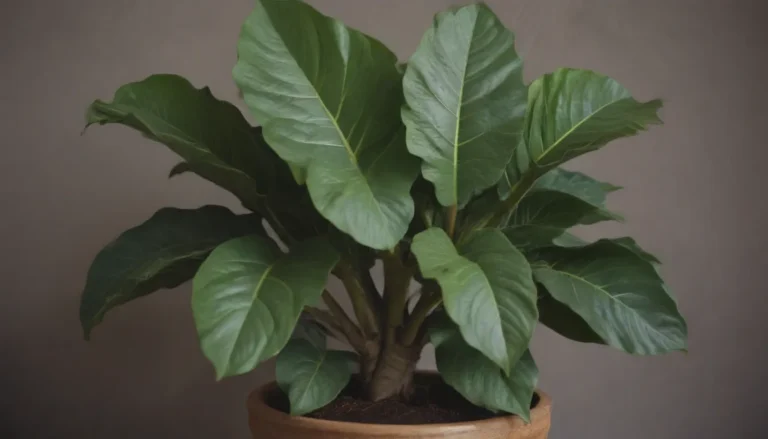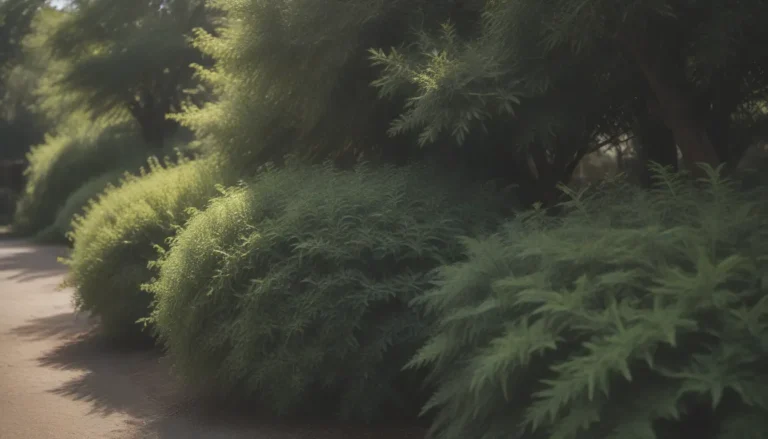Harnessing the Power of Nature: 10 Plants and Herbs That Naturally Repel Flies

Are you tired of swatting away annoying flies while trying to enjoy your outdoor spaces? Flies can quickly become a nuisance, circling your head and buzzing endlessly, disrupting your peace and relaxation. But fear not, there are natural solutions that can help you keep these pesky insects at bay. We’ve consulted with expert horticulturist, Amber Noyes from Gardening Chores, to bring you a comprehensive list of plants and herbs that flies simply can’t stand.
Meet the Expert: Amber Noyes
Amber Noyes is a seasoned horticulturist with a Master’s degree in horticulture from the University of California. With her experience working on organic farms, she has valuable insights into the world of plants and gardening.
1. Basil (Ocimum basilicum)
Basil is not just a flavorful herb for your kitchen, it also works wonders in repelling flies. The aroma of basil, loved by humans, is actually highly unfavorable to flies and mosquitoes. Consider planting basil both outdoors and indoors to effectively deter flies from invading your space.
- Name: Basil (Ocimum basilicum)
- USDA Hardiness Zones:
- Light:
- Soil:
2. Lavender (Lavandula)
Known for its relaxing scent, lavender is a popular choice among gardeners. Its beautiful flowers and soothing aroma can repel flies, moths, and mosquitoes, making it a versatile bug-repellent plant that adds beauty to your garden.
- Name: Lavender (Lavandula)
- USDA Hardiness Zones:
- Light:
- Soil:
3. Catnip (Nepeta cataria)
Catnip may be a favorite of your feline companions, but it’s also a great option for deterring flies. This fast-growing perennial plant emits scents and oils that pests find repulsive, making it an effective natural bug repellent.
- Name: Catnip (Nepeta cataria)
- USDA Hardiness Zones:
- Light:
- Soil:
4. Lemon Balm (Melissa officinalis)
With a citrusy profile similar to mint, lemon balm is rich in citronellal, a compound commonly used in natural insect repellents. Its bright scent can drive away flies, mosquitoes, and other unwanted visitors in your garden.
- Name: Lemon Balm (Melissa officinalis)
- USDA Hardiness Zones:
- Light:
- Soil:
Tip: Lemon balm is a rapidly growing plant, so it’s best kept in containers to prevent it from overtaking your garden.
5. Marigold (Tagetes spp.)
Marigolds are not just pretty flowers; they contain pyrethrum, a compound used in many insect repellents. These annual plants bloom abundantly throughout the summer, providing a colorful display while keeping flies at bay.
- Name: Marigold (Tagetes spp.)
- USDA Hardiness Zones:
- Light:
- Soil:
6. Carnivorous Plants
While not a traditional fly repellent, carnivorous plants like Venus flytraps can help eliminate any stray flies that make their way into your home or garden. These unique plants trap and consume insects, offering a natural solution to controlling fly populations.
- Name: Carnivorous Plants
- USDA Hardiness Zones:
- Light:
- Soil:
7. Rosemary (Salvia rosmarinus)
Rosemary, a fragrant perennial herb, is not only a culinary delight but also a natural fly repellent. Its aromatic leaves are unappealing to flies and gnats, making it a valuable addition to your garden.
- Name: Rosemary (Salvia rosmarinus)
- USDA Hardiness Zones:
- Light:
- Soil:
8. Sage (Salvia officinalis)
Another kitchen favorite, sage, is known for its flavors and aromas that repel flies and other pests. This easy-to-grow herb thrives in both outdoor and container settings, making it a versatile option for natural fly control.
- Name: Sage (Salvia officinalis)
- USDA Hardiness Zones:
- Light:
- Soil:
9. Bay Laurel (Laurus nobilis)
Bay laurel, commonly used in cooking, emits an aroma that flies find unpleasant. Planting a series of bay laurel trees can create a barrier that deters flies from entering your outdoor spaces.
- Name: Bay Laurel (Laurus nobilis)
- USDA Hardiness Zones:
- Light:
- Soil:
10. Mint (Mentha spp.)
Mint, with its refreshing scent, is a popular choice for gardens and kitchens. While humans enjoy its bright aroma, flies find it off-putting, making it an effective natural repellent for keeping your outdoor areas fly-free.
- Name: Mint (Mentha spp.)
- USDA Hardiness Zones:
- Light:
- Soil:
Why Deter Flies?
Flies in their larvae state can wreak havoc on your garden plants, causing soil infestations and damage to your crops. By strategically planting fly-repelling herbs and plants, you can prevent these pests from taking over your outdoor spaces. Here are the top 10 varieties to grow for natural fly repellent.
Additional Tips to Repel Flies
In addition to planting fly-repellent herbs and plants, Amber Noyes suggests the following tips for a fly-free garden:
- Maintain proper sanitation to eliminate fly breeding grounds.
- Use fly traps or screens to keep flies away from outdoor dining areas.
- Keep garbage bins tightly closed to prevent flies from congregating.
- Avoid overwatering plants, as standing water can attract flies.
By incorporating these strategies and planting fly-deterring herbs and plants in your garden, you can create a peaceful and pest-free outdoor environment. So, roll up your sleeves, grab your gardening tools, and let nature do the work in keeping those pesky flies at bay!





